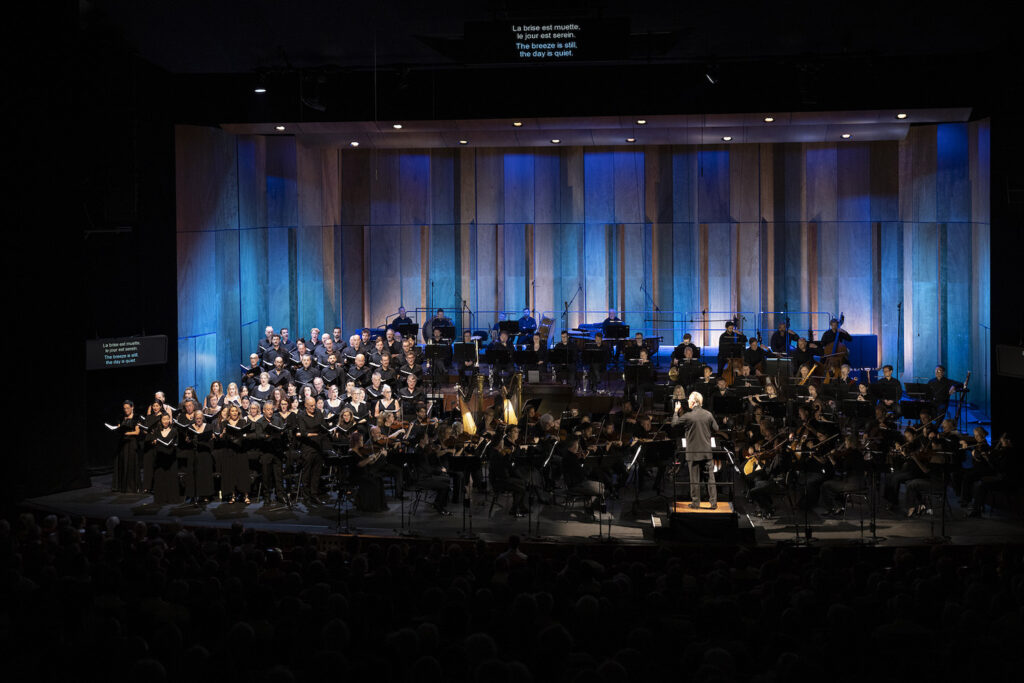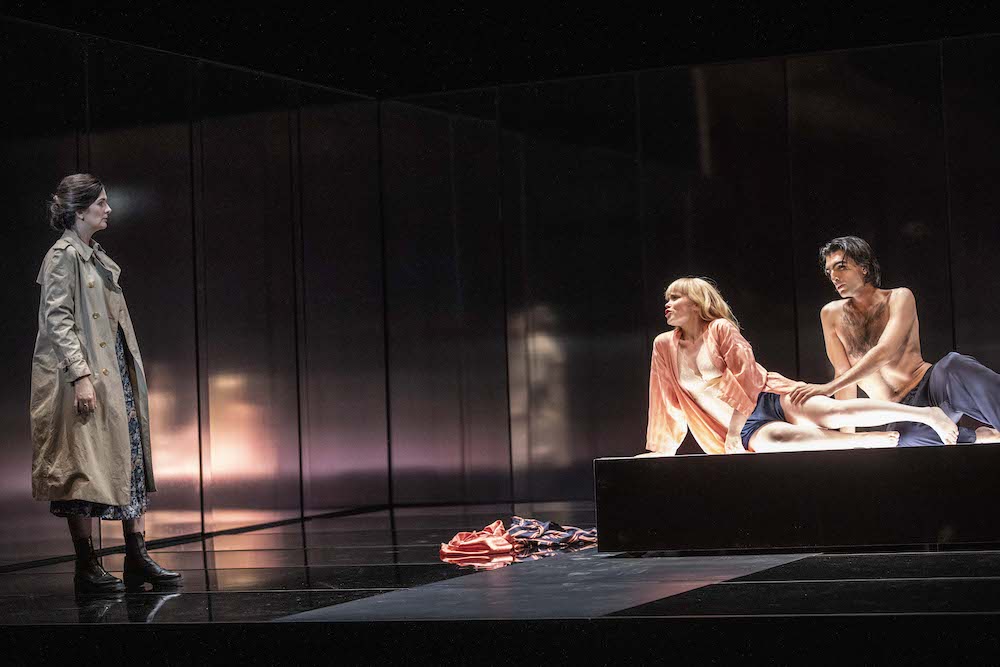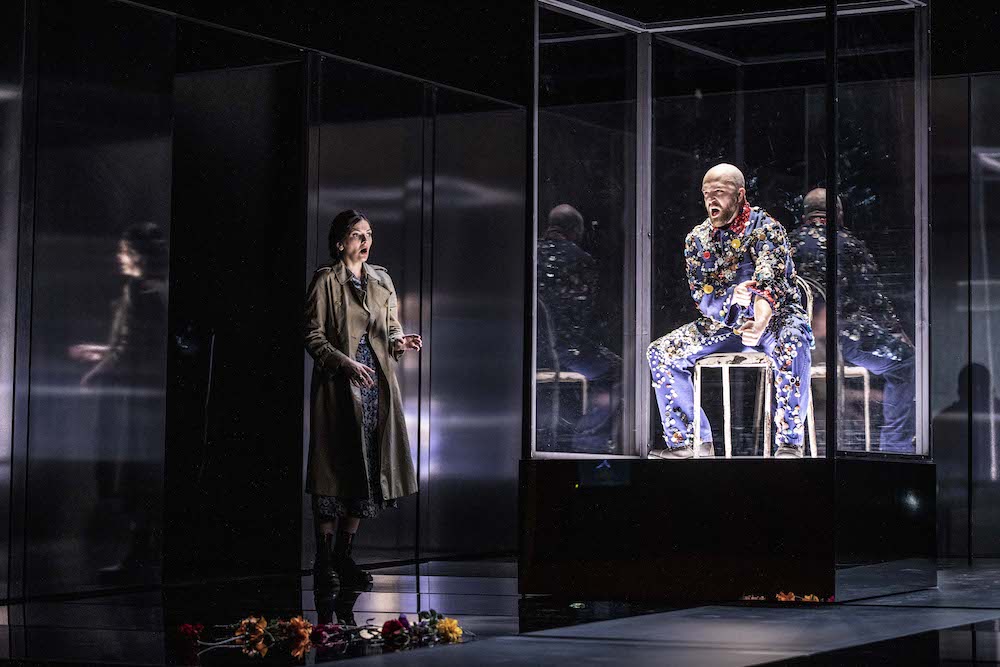Giacomo Meyerbeer was born near Berlin as Jacob Beer. Early in his professional life he joined his maternal grandfather’s given name, Meyer, to his father’s family name, taking on the “Giacomo” handle during his Italian period. He then moved to Paris to partake of the world’s most intense operatic action.
He is almost the exact contemporary of Gioacchino Rossini.
Though Rossini wrote only one grand opera for Paris (Guillaume Tell, 1829), Meyerbeer wrote four, of which Le Prophète (1849) is the third — Les Huguenots is the second, L’Africaine is the fourth and final grand opera — local lore reports that the Marseille Opéra became engulfed in flames right after a L’Africaine dress rehearsal in 1919.
French author Eugene Scribe created the librettos for all four of the Meyerbeer grand operas. This prolific librettist is famed for establishing a “science des planches,” a libretto style famously decried by Richard Wagner in operas that find effect without cause. More precisely these libretti begin with small, seemingly unimportant events that lead to great musical and scenic effects via gripping, musically pregnant situations.
To wit in Le Prophete: Jean saves Berthe from drowning, and falls in love with her, but gives her up to save his mother, Fidès. Jean becomes the prophet the Anabaptists are searching for, he soon becomes a tyrant, though he is always conflicted. He denounces his mother to hold onto his power. Jean visits his mother in prison who reforms him. Berthe arrives, hating the tyrant. She kills herself. Jean and Fidès set the Münster Castle aflame, incinerating both the Anabaptist and Imperial forces. And themselves.
Not to forget the ballets! There are two: the first is the ice skaters on the frozen pond by the Anabaptist military encampment — they are bringing nourishment to the Anabaptist troops, the second is the crowning of Jean as the Anabaptist sovereign in the Münster cathedral. [The Anabaptists later denounced the Münster massacre and became known as Mennonites.]
Speaking of small causes leading to great effects, Picture a Day Like This British composer George Benjamin’s librettist is Martin Crimp (b. 1956). Mr. Crimp has created the librettos for all four of George Benjamin’s operas, of which the third is Written on Skin, premiered at the Aix Festival in 2012. Mr. Crimp has had a huge presence at the Aix Festival as a dramaturge.
Like the lip service Scribe and Meyerbeer paid to the religious currents of their mid-nineteenth century day, Crimp and Benjamin pay tribute to the hypocritical anti-materialistic sentiments that are floating around in our current, materialistic society, with its emphasis on personal success, not to mention the fear that sexual promiscuity is replacing love itself, and that machines are replacing people.
To wit in Picture a Day Like This: A mother (lead photo) refuses to accept the death of her infant child. Magical women advise her that if she can bring them the button from the sleeve of someone truly happy before the day is over the child will return to life. She approaches a set of lovers, though the male is not faithful; an artisan who makes buttons but is an anachronism and he needs the drugs to die; a composer who is beset by fear of becoming a mere footnote; and then a collector who cannot share.
Finally the frantic mother enters a magical garden with a magical keeper who is, in fact, happy. But she is not real, nor is her garden that is created to grand effect by spectacular video projections onto a succession of screens that simulate a huge depth and plants that magically grow to spectacular, threatening size. The keeper, Zabelle, who has lost absolutely everything important to her, gives the mother a button that shines brightly in her open hand. The end.
“Science des planches” indeed. Note as well the self referential composer scene. The esteemed British newspaper the Guardian dubbed Benjamin’s Written on Skin as only the second best work of the 21st century so far — no wonder the witty footnote about fear.

Grand operas are rarely produced. Le Prophète in Aix was given as a one performance concert opera in the 1400 seat Grand Thèâtre de Provence. A full scale production of 4 1/2 hours length with huge chorus scenes, two ballets, a sizable banda (on-stage musicians), a children’s chorus, spectacular scenic effects, an orchestra of triple winds, quadruple brass, two harps, expanded percussion and strings plus six principle singers is not feasible for an opera audience hooked on the more reasonable forces of the Mozart, Wagner and Verdi masterpieces.
The George Benjamin Picture a Day Like This on the other hand is just over an hour in length with a chamber orchestra of 23 players, 5 principal voices (no chorus), an empty stage box of reflective walls and the above mentioned projections. Thus it was fully produced, but in the Festival’s 450 seat Théâtre du Jeu de Paume.
Both operas are works of exceptional musicality. George Benjamin was a student of Olivier Messiaen, thus is some ways he is an acolyte of the French tradition of spectral music (the timbres of sounds are the foreground of music), that he uses in a sort of Webern-like pointillism. There is no harmonic association in the orchestral maelstrom that underlies the text, the timbres of sound colluding in abstract association to achieve a spacial musical meaning (i.e. there are no vertical or horizontal relationships, i.e. intervalic or stepwise).
It is splendid music.

In Picture a Day Like This there was a dramatic exception. The two lovers, in their loving moments, moved in flowing lines, the voices melding together in lovely thirds and sixths — thus the male was written for countertenor, matching the register of the female (as in Baroque opera). As well, when other times a character imparts a mere statement it too can assume an intervalic flow. Otherwise, as in the spectacular vocalism of the emotional meltdown of the mother when she understands that she will not find a happy being on earth, the words connect via sometimes violent intervals, like the tritone (half split octave) and other, always obtuse intervals.
In his early years Giacomo Meyerbeer composed operas in Italian, works that have not found their way into the repertory in spite of premieres in Italy’s major theaters. In the Italian style the melodies would have been the predictable, often soaring cantilena of the time, the smooth, cantabile lines created by Bellini and Donizetti as examples. In the Scribe libretti however the motivations for lyrical expansion become far more complex, even quite tumultuous at times. Meyerbeer responds with larger and longer musical thoughts created by stringing together numerous lyrical fragments that become extended scenes, almost through composed acts, and in the smaller moments as well, as his arias.
Such is the meltdown of Jean’s mother Fidès after Jean refuses to recognize her as his mother. This is her fifth act “Ô prêtres de Baal” where she is tormented by her feelings of love for her son and her hate of his pious tyranny, before she breaks into a Rossini like cavatina “Ô toi qui m’abandonnes” where she forgives him. The melodic fragments are strung together, free form against various woodwind — spectral — timbres, breaking finally into grand chords on the harps. But not before Fidès suffers a melismatic cadenza of pure exasperation (as had her son Jean earlier on). It was not a display of vocal virtuosity à la Rossini, it was singing in full service to emotion.
French grand opera makes great use of the mezzo-soprano voice, reveling in the timbre of the lower female voice to elicit great suffering, tormented by the beautiful, lyric voice of a tenor. The soprano is that of sweetly voiced innocence. In Aix it was a trio of American/American trained singers who triumphed in these three grand opera, tour de force roles.
Pennsylvania born mezzo soprano Elizabeth DeShong is of powerful voice, there is a great depth to her chest tones, urgency in her mid voice and a glowing ease in achieving the upper most reaches of the mezzo register. Moreover she projects a musical intelligence that made her performance as Fidès compellingly real and intensely felt.
Iowa born tenor John Osborn has traversed a career that echoes those of Rossini and Meyerbeer, his initial professional steps in the Rossini roles, moving now in later career to grand opera roles (traversing meanwhile, obviously, Werther and Hoffmann). Appreciated in his performance as Jean was the the clear projection of pianos and pianissimos, greatly enriching the softness and vulnerability of his character, his fortes and fortissimos never losing the beauty of tone that elevated him to the divine status of the prophet.
Armenian born, Houston Opera finished soprano Mané Galoyan brought a dazzling sweetness of tone to Berthe’s character in the expression of love and gratitude she feels for Jean and his mother in the opening scenes, a tonal quality that defined her through her many travails in the opera (a second drowning), and finally her rage at the tyrant Jean leading to her suicide.
All of the opera’s intensely felt suffering was played against almost cardboard antagonists, lightly drawn by Edwin Crossley-Mercer as the willful Count D’Oberthal, tenor Valerio Contaldo as the very demonstrative Anabaptist Jonas (the Count’s previous cellar master), bass James Platt as the Anabaptist Zacharie who argues with the Anabaptist Mathisen, played by bass-baritone Guilhem Worms, then agrees to attack Münster against the wishes of the Prophet. The Anabaptists later decide to sell Jean to the Holy Roman Emperor (unseen). Equally played a bit tongue-in-cheek were the very small roles of the three soldiers, tenor Maxime Melnik, bass baritone Hugo Santos and bass David Sanchez.
As in all concert opera the orchestra assumes far greater relief sitting on the stage than when it resides in a pit. Here is was the London Symphony Orchestra, one of the world’s fine ensembles that succeeded in projecting great joy in realizing this tantalizing score, offering unbridled enthusiasm in depicting the skating ballet and sincere pomp in the coronation. This orchestral effervescence was presided over by distinguished British conductor, Sir Mark Elder, at seventy-six years of age.
In the pit at the Théâtre du Jeu de Paume was the Mahler Chamber Orchestra, an ensemble that has no permanent base but a huge presence in many European cities. In Aix the Benjamin score required 23 of its 45 player contingent. Larger than the pit ensembles that play for the usual Baroque or contemporary operas in this intimate Italian theater, these players had huge presence as solo players colorfully punctuating the happenings on stage in avalanches of sound. The composer himself was at the helm, giving us certainty that the score was performed exactly as he wished it to be.

The singers’ performances were astonishing. The mother was played by French mezzo-soprano Marianne Crebassa who commanded the stage for the duration in a tour de force of voice and acting, negotiating the discordant intervals of text delivery with indefatigable and absolute precision. Her disarming musical confidence set the tone for her comrades, especially the brutal confidence of the button maker (above photo) and the beseeching supplications of the collector, roles played by American baritone John Brancy. Norwegian soprano Beate Mordal had the vocal pleasure to sing the beautiful lines of female lover, and the honor to be the ambitious composer, while Canadian countertenor Cameron Shahbazi sang the composer’s efficient assistant and sensuously acted and sang the role of the male lover. Berlin formed soprano Anna Prohaska commanded the virtuoso lines of the garden keeper Zabelle with the required aplomb.
The opera was very effectively staged (designed and directed) by Strasbourg National Théâtre formed Daniel Jeanneteau, in slick and intelligent, Asian influenced minimalist terms. The staging credit was shared with Marseille born Marie-Christine Soma who lighted the production as well as served as its dramaturge. The effective costumes were designed by Marie la Rocca, the garden video was created by Hicham Berrada.
Michael Milenski